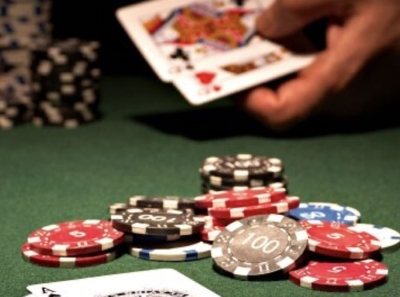Pisa: weak links in European education?
The results of the first Pisa study since the Covid-19 pandemic were published on Tuesday. Around 690,000 schoolchildren aged 15 and 16 from 81 countries were tested. Compared to previous surveys, performance has declined in most countries, with the top spots almost exclusively occupied by East Asian states. Europe’s press concludes that those responsible for education policy need to do their homework.
Adults owe it to children to initiate reforms
The Pisa study also shows a decline in knowledge in Slovenia, so the fact that the country is above the OECD average in mathematics and science is no reason for it to rest on its laurels, writes Primorske novice:
“Any delay in making changes will be most harmful for young people entering the labour market, starting a family and doing everything else that adult life entails. ... And they will enter this path as adults who don’t know how to calculate credit risks, don’t orientate their actions towards protecting the environment, or perhaps don’t understand instructions for using appliances. The state, the education system, teachers and adults in general owe it to them to introduce reforms.”
Targeted support needed
The increase in migrants is no excuse for the poor results in Germany, Handelsblatt stresses:
“Countries such as Italy, Turkey and Portugal have managed to continuously improve their Pisa results even though migration has exploded globally for political and economic reasons. We have not. The causes are lacking support in language acquisition, a lack of targeted support for migrants, as well as for poor-performing German pupils, and a lack of daycare places. ... Our system was already ‘producing’ 20 percent school failures who can’t read, write or do maths properly when migrants only made up 10 percent of the total population.”
Time for a coherent plan
Le Monde is annoyed by the zigzagging in French education policy:
“Due to an incessant waltz of reforms, teachers are subjected to a series of often contradictory regulations. ... Who should we follow? Emmanuel Macron, who emphasises the autonomy of teachers and schools? Or his education minister, who wants to set a nationwide standard for repeating years and forming class groups? The inconsistency is so great that it is impossible to link the Pisa results to a specific policy.”
F grade on equal opportunities
Switzerland’s relatively good overall results should not obscure the big gap between the best pupils and the worst, Le Temps insists:
“Switzerland’s average is driven upwards by a large group of very good pupils. However, the Pisa study also shows that a quarter of pupils do not meet the minimum requirements. That’s a lot, and the gap between the best and the rest is widening. Above all, the study also points to a worrying correlation: pupils from privileged backgrounds achieve the best results, while those from disadvantaged backgrounds confirm their status as underachievers. School is there to educate and for learning. However, it is also there to offer all pupils the same opportunities.”
Gap bigger in Hungary than almost any other country
In one category Hungary once again came almost last, hvg laments:
“The study has once again confirmed the most worrying problem in the Hungarian education system, a problem which has existed for many decades: it is not making progress in reducing social differences. The performance gap between children from different family backgrounds is enormous. The scores of children from the most disadvantaged backgrounds were 121 points lower in the latest Pisa test than children from the most advantaged backgrounds, which is a very poor showing in the international comparison. The OECD average was 93 points.”
More non-digital teaching
Danish pupils also performed poorly in the Pisa study. Politiken argues that less screen time is key:
“The Covid crisis is behind us and hopefully a more cautious approach will be adopted regarding closing schools in the event of a new pandemic. However, screens are still an integral part of everyday life. It must give us pause for thought that Danish schoolchildren have record levels of screen use. ... Danish schoolchildren spend 3.8 hours in front of a screen at school — almost twice as much as the average in other countries. ... The depressing news about declining results in education clearly shows the direction in which we should be heading: less screen time, more school.”
Slovakia won’t even be good enough for factories soon
Pravda is appalled by its country’s results:
“More than 30 years after the revolution, we can no longer use the post-communist legacy as an excuse. Poland and Estonia in particular show that even countries in transition can offer children a high-quality education. The results this time could be due to Covid. But then how can we explain the fact that the neighbouring V4 countries and Austria achieved above-average results? We are simply doing something wrong, and if we don’t grasp this, as time passes we’ll even cease to be an ‘extended factory’ for other countries because we lack the skilled workers”









